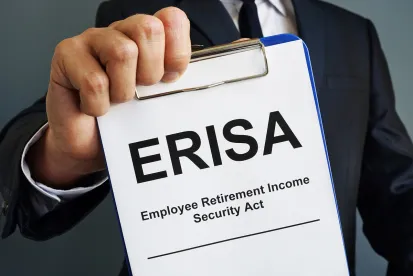The Department of Labor (DOL) issued a final rule that explicitly allows—but does not require—retirement plan fiduciaries to take climate change and other environmental, social, and governance (ESG) considerations into account when choosing investments and exercising shareholder rights. This article describes the five key takeaways from the final rule for retirement plan fiduciaries.
Background
According to the DOL, the prior rule issued under the Trump administration, which we discussed in a previous article, created uncertainty regarding ERISA’s fiduciary duties of prudence and loyalty when selecting investments and exercising shareholder rights. As was noted in a later article, the DOL under the Biden administration had announced that it would not enforce the prior rule. The DOL now views the 2020 rule as having an unintended “chilling effect” on ESG investments and considers the final rule to be necessary to reverse that effect.
The Five Takeaways
-
A retirement plan fiduciary may consider ESG factors when selecting retirement plan investments, but it is not required to consider these factors.
-
The retirement plan fiduciary will now apply the “tiebreaker” test differently. The prior rule required that competing investments be economically indistinguishable before the fiduciaries could turn to collateral factors (that is, benefits other than investment returns) to break a tie, and it imposed special documentation requirements on the use of collateral factors. The final rule only requires the fiduciary to prudently conclude that competing investments or investment courses of action equally serve the financial interests of the plan over the appropriate time horizon, and the fiduciary is not prohibited from selecting the investment or investment course of action based on collateral benefits. The final rule also eliminates the special documentation requirements.
-
No special or heightened standard applies when selecting a qualified default investment alternative.
-
A retirement plan fiduciary may consider participants’ non-financial preferences to plan investments without violating the fiduciary’s duty of loyalty.
-
A retirement plan fiduciary may be required to participate in proxy voting relating to plan investments in stock when it is in the best interest of the plan.
Timing
The rule will generally take effect 60 days after it is published in the Federal Register, which is expected to occur soon. Some provisions related to proxy voting will take effect one year after the rule is published.
Conclusion
The final rule, which is a clear reversal of the 2020 rules issued under the Trump administration, provides retirement plan fiduciaries with greater flexibility to craft retirement plan investment menus that may better align with participant desires. However, the rule does not alter the fundamental duties of loyalty and prudence in selecting retirement plan investments and is unlikely to dissuade potential plaintiffs from bringing claims based strictly on financial factors. Thus, to the extent retirement plan fiduciaries make any investment-related decisions based on ESG factors, they should carefully document the decision-making process and be cognizant of the potentially heightened risk of litigation.




 />i
/>i

